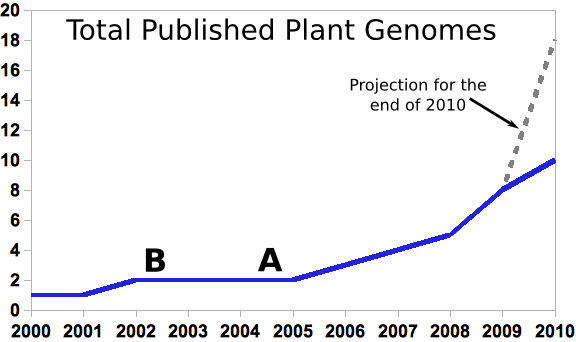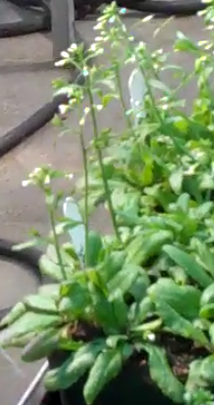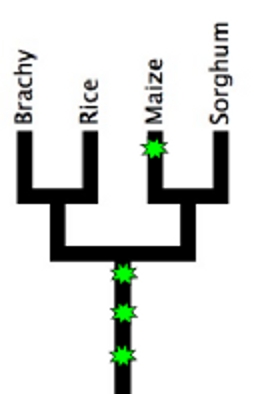Edit: stripped out all the numbers as they clearly applied to an earlier version of the data and I don’t know if the new ones are intended for public release yet.
Last november when the maize genome was published, one of the companion papers looked at genes where a different number of copies were found in different breds of maize (this is called Copy Number Variation) and genes found in B73 (the variety of maize that was sequenced) but completely missing from the genomes of other varietes. There’s a great post on that paper written up by Mary at OpenHelix.
A few months later, it sounds like this dataset has grown substantially. Over XXXX B73 genes (that’s X% of the filtered B73 gene set!) that appear to be lost (or have sequences so different they no longer register) in at least some varities of maize. And because the new dataset incorporates data from XX different maize breds and XX different teosinte* lines they’re able to identify some of the losses as older because they’re found in multiple comparisons, while some appear to be lost in only a single breed, and might represent more recent losses.
As you can imagine I’d love to get my hands on this dataset myself, but the next best thing will be to take furious notes when Nathan Springer talks about the project on Friday morning**, and being sure to swing by Steven Eichten’s poster soak in the awesomeness.
Ruth A. Swanson-Wagner et al. “Combined Analysis of genomic structural variation and gene expression variation between maize and teosinte populations” Talk #1 2010 Maize Meeting (Presented by Nathan Spinger)
Steven R. Eichten et al. “Extenisve Copy Number Variation Among Maize Lines” Poster #139 2010 Maize Meeting
*Teosinte is the wild species from which maize/corn was domesticated.
**And he’s talking at 8:30 AM on a day when I still plan on being heavily jet lagged.




